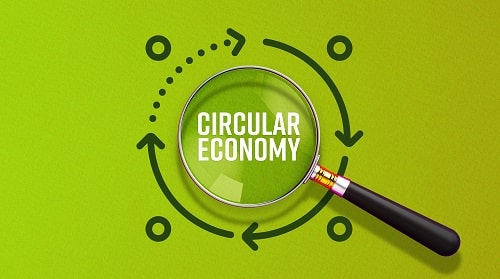Environmental factors such as noise, air quality, temperature and ventilation can all impact on the health, wellbeing and productivity of office workers, so it makes sense to address them when designing and running office buildings.
Features
A healthy office: how design can boost wellbeing
In the past the office was somewhere we commuted to five days a week, and because of this habitual routine, we perhaps didn’t think too much about the positive or negative impact the workplace environment might be having on our wellbeing.
With many employers in the UK now operating a hybrid working model, many of us have now become ‘visitors’ to our own workplaces. As visitors, we are therefore more observant about all aspects of the office environment and are more aware of the importance of hygiene factors post-pandemic.
So, if we stop to consider all the areas where the office could have a detrimental effect on our health and wellbeing, it can easily become a minefield.  With many employers in the UK now operating a hybrid working model, many of us have now become ‘visitors’ to our own workplaces. Photograph: iStock
With many employers in the UK now operating a hybrid working model, many of us have now become ‘visitors’ to our own workplaces. Photograph: iStock
A variety of research has shown that a badly designed office can lead to physical discomfort, stress and decreased productivity. For instance, research by Robertson Cooper in 2010–13 found that 30 per cent of employees were troubled by their physical working environment. Furthermore, employees who were troubled in this way were more likely to have a negative perception of their own levels of psychological wellbeing, physical and psychological health, and engagement, compared to those who were not.
So, the physical working environment is therefore something that either positively or negatively impacts the health, wellbeing and engagement of office-based workers and is therefore something that employers and others in charge of office buildings need to consider and get right.
An employer in charge of an office building, or the owner of an office building where employers lease space for their teams, can take a number of steps to ensure the building is fit for purpose, is designed to support human health and wellbeing and therefore will effectively support employees to thrive at work.
Formal rating systems for buildings
For instance, owners and operators of office buildings can seek accreditation under various formal rating systems that require the building to meet certain design features and operational protocols that have been shown to provide a healthy and safe environment – which in turn has a positive impact on the wellbeing of occupants and visitors.
In essence, these rating systems and standards require those who construct, operate, manage and maintain office buildings to create spaces that enhance – rather than hinder – health and wellbeing, and measure (and then improve), the quality of features like the air, water, light and sound inside the building.
There are four main building design rating systems available:
- WELL certification – this is a global rating system that recognises buildings designed and constructed to support the health and wellbeing of their occupants.
Developed by the International WELL Building Institute (IWBI), WELL certification evaluates the performance of a building in areas like sustainability, health and wellbeing, in line with the latest scientific research on how design interventions, operational protocols and policies can foster a culture of health and wellbeing. It examines and rates the physical environment and features of a building and their impact on wellbeing, such as air, water, light, movement, thermal comfort, sound and materials. - Fitwel healthy building certification – this allows those in control of new and existing office buildings and sites to achieve certification for how effectively their building supports the health and wellbeing of its occupants. The scheme uses scorecards to measure how design and operational strategies address a broad range of health behaviours and risks – such as whether the building incorporates opportunities for physical activity, like promoting stair use; and provides occupants with enhanced access to healthy foods.
- BREEAM (Building Research Establishment Environmental Assessment Method) – a science-based certification system for specifying and measuring the sustainability performance of buildings, ensuring that projects meet sustainability goals and continue to perform optimally over time. It evaluates the procurement, design, construction and operation of a development or building against a range of environmental performance targets – such as energy and water use, health and wellbeing, pollution, transport, materials, waste, ecology and management processes.
- RESET standard – a set of standards and assessment tools and services that standardise the collection of data and improve the quality of data to help built environments become healthier and more sustainable. The standard includes RESET Air, which aims to standardise the continuous monitoring of air quality in built environments, allowing the building owner to understand the indoor air quality and providing actionable results for improving it.
It is worth noting that because the WELL standard has preconditions, it may be better suited for newer or refurbished buildings which have been designed to meet modern requirements. On the other hand, the Fitwel standard offers more flexibility as it has no mandatory preconditions.
Gaining these certifications involves a financial cost and the process can be expensive and very labour intensive, so it may not be suitable for all office buildings and office owners.
Practical and low-cost steps to boost wellbeing
However, even if a building owner doesn’t have the budget or time to gain one of these official accreditations showing how their building supports employee health and wellbeing (and meets suitable environmental performance standards), there are a number of practical and often low-cost steps they can take to significantly improve the wellbeing of their office staff.
 It is important to allow staff to have as much control over their office working environment as possible. Photograph: iStock
It is important to allow staff to have as much control over their office working environment as possible. Photograph: iStock
These include:
- Consider measuring air and water quality in the building. Also, inform employees and visitors about the air and water quality so there is full transparency about these conditions. It is also vital to ensure adequate ventilation.
- Ensure there is suitable thermal comfort – ideally individual occupants, or groups of people in a specific area, should be able to tweak the local environmental conditions like the air temperature to ensure they have adequate thermal comfort.
- Ensure there is adequate lighting in all areas, specifically tailored for the specific area.
- Create various types of spaces – for example, a ‘quiet space’ will help workers to focus and concentrate away from noise and distractions.
- Consider the wellbeing facilities in the building – such as providing gym or physical exercise equipment and areas – or establish partnership deals with local gyms so workers can access exercise and related activities at reduced rates.
- Natural light – access to natural light, for example, through office windows or by creating outside spaces where staff can relax or even work, will increase feelings of wellbeing and reduce headaches.
- Encourage staff to move – for example, by encouraging walking meetings, encouraging staff to use their lunch break for physical activity and providing at-desk massage services.
- Acoustics – the sound level and type of noise are often overlooked in an office, however excessive noise can affect staff wellbeing, stress and concentration so it may be worth asking an external consultant to check if the noise levels are excessive and advise on ways of reducing them.
- Materials used in the office – items like office furniture and meeting room drapes can contain volatile organic compounds (VOCs) that release gases, so it’s essential to select items that either do not contain VOCs or contain lower levels of them.
- Onsite catering, food vending machines and meeting room refreshments – the food provided should be healthy, nutritious and not contains excessive sugar as a healthy diet helps support employee health and performance.
- Universal design – the workspace should be accessible for all, including people with disabilities and older workers with mobility issues, as this will ensure all workers feel welcome and supported to perform to their best. Areas to consider include ensuring adequate access to toilets and catering facilities, and adjustable desks and workstations to suit different people.
- Cleaning standards – environmentally-friendly and safe cleaning products should be used and there should be enhanced cleaning regimes and employee access to cleaning products if people are hotdesking and sharing the use of items like keyboards.
- Introduce biophilia – plants remove indoor pollutants and are scientifically shown to lower stress, increase creativity, wellbeing and productivity.
At Invigorate Spaces, the company I founded, we believe the workplace environment really does affect employee wellbeing but is often overlooked. We believe that either seeking formal accreditation for a healthy workspace, or just reviewing the items mentioned, will help improve employee wellbeing and performance.
 Bex Moorhouse: "We believe the workplace environment really does affect employee wellbeing but is often overlooked."
Bex Moorhouse: "We believe the workplace environment really does affect employee wellbeing but is often overlooked."
Also, it is important to allow staff to have as much control over their office working environment as possible, so they can adjust environmental factors to suit their preferences and therefore improve their feelings of wellbeing and their performance.
So, it is essential to give employees as much control as possible over factors like the lighting, heating and noise levels – particularly when they have become used to adjusting these to their own preference when working from home. In addition, employers in control of ‘well’ workplaces always consider the wider environmental factors beyond those covered in Health and Safety Executive guidance.
Invigorating the office space is essential if an employer wants happy and healthy staff, but even the lowest investment is guaranteed to see a positive return.
Invigorate Spaces is a corporate wellbeing consultancy – see:
invigoratespaces.com
Bex Moorhouse is founder of Invigorate Spaces Ltd
FEATURES

How to build circular economy business models
By Chloe Miller, CC Consulting on 07 April 2025
Widespread adoption of a circular economy model by business would ensure greater environmental and economic value is extracted and retained from raw materials and products, while simultaneously reducing carbon emissions, protecting the environment and boosting business efficiency and reputation.

What does the first year on an accelerated net zero path have in store for UK businesses?
By Team Energy on 07 April 2025
The UK is halfway to net zero by 2050 and on a new, sped-up net zero pathway. In light of this, Graham Paul, sales, marketing & client services director at TEAM Energy, speaks to TEAM Energy’s efficiency and carbon reduction experts about the future of energy efficiency and net zero in the UK.

Aligning organisational culture with sustainability: a win, win for the environment and business
By Dr Keith Whitehead, British Safety Council on 04 April 2025
The culture of an organisation is crucial in determining how successfully it implements, integrates and achieves its sustainability and environmental goals and practices. However, there are a number of simple ways of ensuring a positive organisational culture where everyone is fully committed to achieving excellent sustainability performance.



